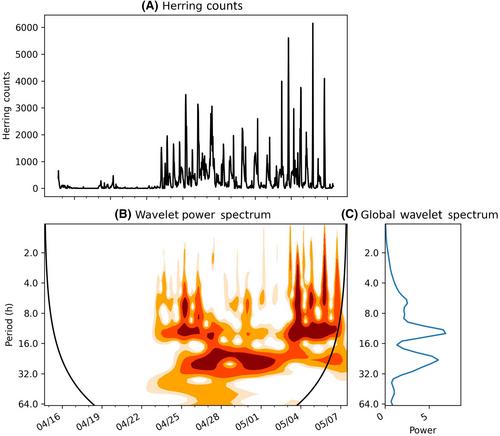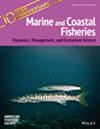Alewife Alosa pseudoharengus and Blueback Herring A. aestivalis, collectively referred to as river herring, are anadromous clupeids inhabiting the North American Atlantic coast. Although the seasonal patterns of their spawning migration are well studied and predictable, the fine-scale movements are still poorly resolved.
This study used high-resolution acoustic imaging to study the fine-scale behavior of river herring during their spring spawning migration in two coastal rivers in Massachusetts, United States.
Observations suggest that seasonal patterns of migration appear to be influenced by temperature, while fine-scale patterns in migration were associated with the time of day, tidal state, and their interaction. River herring were consistently observed during both day and night, with elevated peaks of activity in the early morning and late afternoon. Daytime movement consisted of the intermittent passage of large, dense schools, while nighttime movement consisted of the frequent passage of individuals or small groups. The highest numbers of herring observations were associated with flood and high tides. Additionally, the interactions between time of day and tidal state resulted in synergistic positive effects during crepuscular incoming tides, which were favorable to movement, and synergistic negative effects during midday low tides, which inhibited fish movement.
The changing relationship between the time of day and tidal state within the season manifested in changing periodicity in fish movement to correlate with favorable movement conditions. Since movements may be related to both time of day and tide, previous run size estimates from visual counts made only during the day may be too low. Sampling methodologies that collect information during all 24 h would likely produce the most accurate run size estimates. This study highlights the need to view river herring migration in a holistic context predicated by multiple environmental and biological factors that vary at several temporal scales (i.e., seasonally, daily, and hourly).



